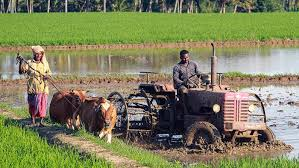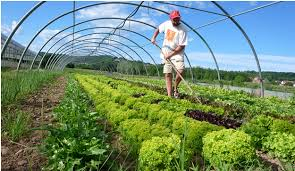Welcome to Village Life with MJ, where the charm of rural living comes alive! Join MJ on a journey through the beauty and simplicity of village life, exploring traditions, local culture, and the close connection to nature. Whether it's farming, festivals, or everyday moments, this blog offers a heartwarming look at life away from the hustle and bustle. Step in, relax, and embrace the peaceful pace of village life!
Challenges Faced by Villagers Today
By Village Life with MJ
Village life is always idealized as simple, beautiful, and peaceful. Yet, for so many villagers nowadays, this reality is far from utopian. Indeed, modern-day villagers face different challenges that make their lives really hard, damage their well-being, and badly affect their further prospects. This post on Village Life with MJ will share the major difficulties villagers of today face in the rapidly changing world and how these issues are now reshaping the rural community.
1. Limited Access to Healthcare
2. Poor Educational Infrastructure
Village Crafts and Handicrafts
Village Crafts and Handicrafts: A Celebration of Tradition and Creativity
By Village Life with MJ
Preserving Village Crafts for Future Generations
Conclusion
Farming Practices and Agriculture
Village Life with MJ: Farming Practices and Agriculture

Welcome to Village Life with MJ, your complete blog on all things related to farming practices and agriculture. Be it a professional farmer, hobbyist gardener, or a person interested in rural life and sustainable practices, this blog presents firsthand insights into the fascinating world of village farming and agricultural methods that shape livelihoods in rural communities.
A Glimpse into Traditional and Modern Farming
At Village Life with MJ, we explore a blend of traditional farming methods mixed with modern agricultural innovations. Farming has always been the backbone of village life; every community developed its way concerning prevalent climatic and soil conditions. Agriculture in today's world is changing; from the wisdom of old, it now incorporates state-of-the-art technology in precision farming, organic practices, and sustainable agriculture. Our blog goes in-depth into the details of such farming methodologies and how local farmers cope with new challenges: adaptation to climate change, conservation of water, and shifting to more eco-friendly methods. We cover a variety of crops, livestock farming, and agroforestry, highlighting the best approaches to soil health, pest control, and crop rotation that will provide the best yields while minimizing environmental impact. Agriculture in Village Life
Agriculture is the mainstay of village economies and sustains village communities. Village Life with MJ presents the role of a farm to the rural families to attain economic stability and social cohesiveness through farming. Every farm aspect demands hard work, expertise, and adaptability-skillful seasonal crop planting to animal rearing. We will be glad to share stories of farmers representative of their hard work, struggles, and success stories. You will learn how they control everything, from planting cycles to irrigation systems, using methods that are both productive and sustainable.
Sustainable Farming and Organic Practices
A major focus of Village Life with MJ is on sustainable farming practices and the growing movement towards organic agriculture. With increasing awareness regarding the environmental and health impacts of conventional farming, more farmers are looking to organic farming methods that encourage the use of natural fertilizers, pest control, and soil management.
We give guidelines for small-scale farmers and home gardeners on how they can implement this, from composting and crop diversification to the integration of livestock for natural enrichment of the soil. These approaches have the added benefits of ensuring better produce while protecting the land for years to come.
Exploiting New Agricultural Technologies
As much as traditional farming is a backbone of village life, new technologies do find their place in the fields. From drip irrigation to drones that monitor crops, technology is fast changing the way we do agriculture. On Village Life with MJ, we delve into how these technologies are being applied to enhance productivity, cut labor, and further sustainability. In the final analysis, Village Life with MJ is not just a blog but a celebration of people, practices, and progress in shaping the world of
farming and agriculture today. Follow along as we explore the beauty, challenges, and opportunities that come with life on the farm.
Traditional Festivals and Celebrations
Traditional Festivals and Celebrations
Website: Village Life with MJ
The Significance of Festivals
Major Traditional Festivals
1. Harvest Festivals
The most important time of celebration within villages is the harvest festival. It marks the close of the agricultural circle: thanksgiving for a good harvest.
Celebration Activities: Feasting, singing, and dancing by the villagers are common. Traditional foods made from the newly harvested crops are shared among families and neighbors.
Rituals: Offerings are made to the gods in thanksgiving for the harvest, a clear testimony to how deeply the villagers feel for the land.
2. Religious Festivals
Religious festivals are an intrinsic part of the spiritual life of villagers. Diwali, Eid, and Holi are some of the events that are celebrated with great fervor and have their own significance.
Cultural Practices: During these festivals, villagers decorate their houses, carry out rituals, and arrange joint prayers. The joy from such celebrations often unites people from diversified walks of life.
Community Involvement: The common practices of food distribution and charity during these festivals emphasize the spirit of giving and togetherness.
3. Local Fairs and Melas
Community Bonding
The communal aspect of festivals cannot be overemphasized. It is the festivals that instill in villagers the spirit of unity and belonging.
Strengthening Relationships: Festivals are times when families would have time for bonding, making amends with one another, rejuvenating their bond with each other and the community.
Collective Joy: The shared experiences of joy, laughter, and sometimes even sorrow during these events create lasting memories that bind the community together.
Conclusion
Traditional festivals and celebrations form a very major part of village life, which gives a peep into the cultural tradition, value system, and connections defining rural life. Village Life with MJ celebrates these moments that bring people together, enrich lives, and preserve the continuance of culture.
Be it the frolic of the harvest festival or the warmth of a religious one, such occasions remind us about community and tradition. Join Village Life with MJ as we look into this colored tapestry of village celebrations and the stories they tell.
Daily Routines in Village Life
Daily Routines in Village Life
Website: Village Life with MJ
Morning Rituals
Contact us
Contact us
Welcome to Village Life with MJ! The heart of the village is at the core, where we share our stories, traditions, and natures' beauty. Join me, MJ, as we visit local culture, share sustainable tips, and enjoy home-cooked recipes. Each post puts across the heart and authenticity of rural communities; it invites people to connect with it and inspires them. Whether a village lover or just curious, there is something here for everyone. Welcome aboard!
Gmail:blogerwebsits@gmail.com
VILLAGE LIFE with MJ
Village Life with MJ - مالیاتی ڈیش بورڈ 📊 Village Life with MJ - مالیاتی ڈیش بورڈ کل آمدنی (اس مہینے)...

-
Privacy Policy This Privacy Policy explains Our policies and procedures on the collection, use and disclosure of Your information when Yo...
-
Transforming Village Life: A Guide to Growth & Modern Living Revolutionizing your life in a village may involve enhancing your way of l...



















